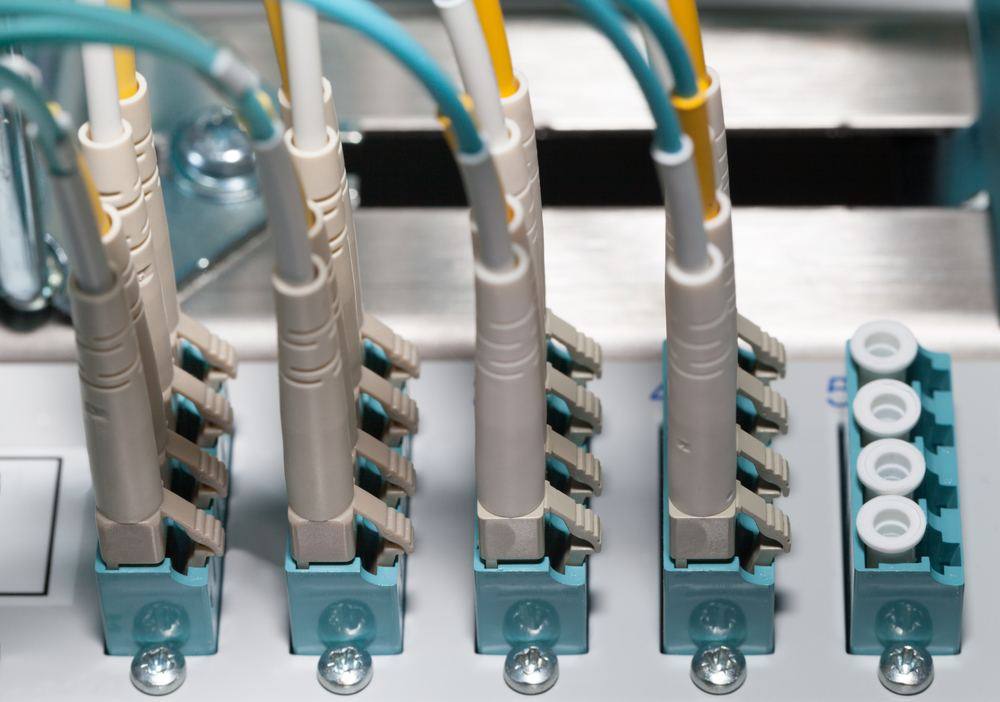IT Relocation Support and Planning

With the growing shift towards remote and hybrid offices and the high rental costs in the UK capital, many London-based businesses are opting for relocation.
Whilst moving offices may seem straightforward, moving computers servers and other IT equipment can throw up numerous challenges. Seeking professional IT relocation support services in London is advisable.
In this article, we will discuss potential problems that can arise when transferring IT equipment. Be mindful of these pointers in your planning. We will also discuss some solutions that are available to you plus the benefits of taking advantage of IT relocation support services in London.
Micro Pro’s IT support in London specialises in IT infrastructure relocation, Our experienced crew flags up potential issues and addresses these concerns with effective solutions. Our expertise, knowledge and skills are proven to efficiently plan and execute complex relocations, ensuring the proper handling of critical systems.
Implementing strategies and best practices, our IT relocation support services in London ensure a smooth transition. With IT support specialists on your team, you can be confident in organising relocation plans, scheduling downtime for minimal impact, and implementing efficient procedures for setting up IT systems at the new location quickly.
Managing an IT relocation internally demands significant time, effort, and resources, diverting attention from core business operations. Outsourcing to IT relocation support services in London allows businesses to free up internal resources for focusing on essential tasks.
Potential Problems When Relocating IT
Relocating IT infrastructure can pose various challenges and potential problems. It’s crucial to be aware of these issues to adequately plan and mitigate risks during the relocation process.
Downtime and Business Disruption
Relocating IT equipment often involves shutting down systems temporarily. Downtime can disrupt normal business operations, leading to financial losses and negatively impacting customer satisfaction.
IT relocation support services can work out of office hours, either in the evenings or over the weekend. Most businesses don’t lose any productivity time whatsoever, whilst downtime for 24/7 services is kept to the bear minimum.
Prevent Data Loss, Corruption or Damage
During the relocation process, there is a risk of data loss or corruption. This can happen if data backups are not properly executed or if there are issues during the data transfer phase.

Office relocations can also expose your business network and increase the risk of security breaches. IT equipment in transit may be vulnerable to theft, and data transfers could be exposed to unauthorised access if not properly secured.
Before initiating the relocation, a comprehensive backup plan should be developed. This involves creating full backups of all critical data, applications, and configurations. These backups serve as a safety net in case of any unforeseen issues during the relocation.
IT relocation services use secure and reliable data transfer protocols to move data between the old and new locations. In addition, physical equipment is securely packaged in sealed containers, and fitted with tracking mechanisms.
Secure packaging also prevents sensitive IT equipment from being damaged during transit or while being moved. Improper handling, accidents, or environmental factors may lead to physical damage, impacting the functionality of servers, computers, and other hardware.
Network Connectivity Issues
The setup of network infrastructure, including cabling and configurations, at the new location may lead to connectivity issues if not planned and executed correctly. This can affect communication and data transfer between devices.
Before and after the relocation, extensive testing should be conducted to ensure that network connectivity is established correctly. This includes validating data transfer speeds, latency, and the reliability of the network infrastructure.
Lack of Compatibility
The new office space may not be fully compatible with your IT infrastructure. Issues with power sources, environmental conditions, or space constraints can arise, impacting the installation and functionality of equipment.
Likewise, older equipment may face compatibility issues with newer infrastructure or software at the new location. This can lead to functionality problems and require additional investments in upgrades or replacements.
Thorough testing of IT systems should be conducted before and after the move. This includes checking network connectivity, server functionality, and the performance of critical applications. Validation ensures that IT infrastructure operates as expected in the new environment.
Even after testing, a contingency plan is a smart approach. Contingency plans are developed to address unforeseen circumstances. This includes backup solutions, alternative communication channels, and plans for resolving issues quickly. Having contingency measures in place helps mitigate the impact of unexpected challenges.
Communication Breakdown
Inadequate communication between IT teams, stakeholders, and relocation service providers can lead to misunderstandings, delays, and mismanagement of critical tasks.
IT relocation services coordinate with various stakeholders, including IT teams, facility managers, vendors, and employees. Regular communication ensures everyone is informed, and potential issues are addressed promptly.

Inadequate Planning
Poor planning can lead to a variety of issues. Incomplete risk assessments, insufficient resources, or a lack of contingency plans can result in unexpected problems during the relocation.
A detailed and comprehensive relocation plan is essential. This plan should cover all aspects of the IT move, including equipment, servers, network infrastructure, cabling, and data migration. Thorough planning helps anticipate challenges and ensures a systematic approach to the relocation.
Documentation Issues
Inadequate documentation of IT assets, configurations, and relocation plans can create confusion, making it challenging to troubleshoot issues or perform future upgrades.
To address these potential problems, careful planning, thorough risk assessments, effective communication, and collaboration with experienced IT relocation support services are essential. Having a well-defined strategy and contingency plans in place can help minimise disruptions and ensure a successful IT relocation.
IT equipment should be properly labelled and registered in a detailed inventory. Labelling helps identify each piece of equipment, and an inventory provides a comprehensive list of all assets. This facilitates tracking and ensures that nothing is lost or misplaced during the move.
Unforeseen Costs
Unexpected costs may arise due to underestimated expenses, equipment damage, or the need for additional resources during the relocation process. Experienced IT relocation support professionals ensure you are not burdened with expenses that have not been accounted for.
What IT Relocation Support Specialists Do
IT relocation support specialists offer knowledge and experience that may surpass that of in-house IT teams. They conduct a comprehensive assessment of the current IT infrastructure, systems, and requirements to determine the relocation project’s scope and identify potential risks or challenges.
Specialists then draft a detailed plan outlining tasks, timelines, milestones, and resources for the IT relocation project, addressing physical equipment, data migration, network infrastructure, risk mitigation, and system configurations.
Coordination and management of various moving parts involved in the relocation process, such as transportation, network providers, telecommunications companies, and equipment suppliers, are handled by IT relocation support specialists.
Safe and Secure Server and Infrastructure Relocation
Relocating IT infrastructure involves de-racking and re-racking servers. Given the delicate nature of IT equipment and its sensitivity to environmental factors, working with IT relocation support services in London give you access to the right tools, equipment, and techniques for secure packing, handling, and transport is crucial.
Trained personnel with experience in server hardware and rack installations perform the de-racking and re-racking process to minimise the risk of damage or accidents.
Identification and mitigation of potential risks and issues during relocation, including data loss, system downtime, security breaches, and logistical challenges, are crucial. A contingency plan should be in place for unforeseen circumstances.
Coordination of the physical setup of equipment, such as servers, workstations, networking devices, and peripherals, at the new location, ensuring proper cabling, power requirements, and infrastructure configuration to support IT systems.
Asset Tag Hardware
Asset tagging hardware involves labelling or marking physical IT assets with unique identification tags or labels to track and manage assets throughout their lifecycle. Various tagging solutions, such as barcode labels, QR codes, or RFID tags, can be used based on factors like durability, readability, and compatibility with the asset tracking system.

Gathering relevant asset information, including details such as asset name, serial number, purchase date, warranty information, and other pertinent data, and linking it to the asset tag in the asset tracking system.
Establishing an asset tagging system that can be used for ongoing management of IT equipment, including tracking movements, maintenance, and changes in the equipment’s lifecycle.
Removal and Disposal of Redundant Equipment
The removal and disposal process for redundant equipment should be handled appropriately in accordance with environmental rules and data protection regulations. Proper disposal methods should be considered together with data security, and potential environmental impact.
Assessing the condition of each item to determine appropriate disposal methods, potential reuse, or repurposing. Backing up data stored on servers and devices before transferring it to replacement storage locations.
Proper recycling and disposal of equipment through certified e-waste recycling facilities or vendors specialising in electronic waste management. Adhering to local or national regulations regarding electronic waste disposal.
Obtaining records of the disposal process, including a list of equipment, dates, and methods used, for compliance and responsible disposal practices.
Securing sensitive data by physically destroying hard drives to prevent potential data recovery and data breaches.
Transport of IT Equipment
Ensuring safe and secure transport of IT equipment by using reputable logistics and transportation providers experienced in handling technology-related shipments.
Implementing measures such as encryption, tracking mechanisms, documented chain of custody, and adherence to industry best practices to mitigate the risks of data breaches, unauthorised access, or data leaks during transit.
Considering the sensitive and confidential nature of data in IT equipment, maintaining data privacy and integrity throughout the transport process.
Adhering to specific regulations in industries such as healthcare, finance, and government regarding the handling and transport of IT equipment.
Full Cabling Solutions
Designing and implementing comprehensive cabling solutions that support efficient data transmission, reduce downtime, simplify network management, and meet overall connectivity needs.

Assessing specific business requirements, current and future network infrastructure needs, data volume, anticipated growth, and any specialised requirements.
Designing a structured cabling system, considering cable types, network topology, equipment placement, pathways, and cable management, while ensuring compliance with industry standards.
Installing copper and fibre optic cables, routing them through appropriate pathways, such as conduits, trays, or raceways, and integrating network hardware, including switches, routers, patch panels, and cabinets.
Testing and certifying the cabling system’s performance and integrity, including parameters like cable length, attenuation, impedance, crosstalk, and signal quality.
Providing proper labelling and documentation for quick identification and reference, ensuring organised cable management for accessibility, airflow, and future maintenance.
Offering ongoing maintenance and support for addressing issues, performing repairs or upgrades, and ensuring the long-term performance and reliability of the cabling infrastructure.
Get Up And Go With Micro Pro
Beyond moving equipment, IT infrastructure relocation involves handling network infrastructure, cabling, connectivity, and configuration. Professional IT relocation support services in London can ensure the new location is properly set up with an efficient and reliable network environment.
Data security is a critical consideration during IT relocations, and professional services can securely back up and migrate data to the new location, implementing appropriate data encryption, secure data transfers, and compliance with data protection regulations.
Planning and executing a strategy for transferring data, ensuring data integrity, security, and minimal downtime, with thorough testing of relocated IT systems to verify security and functionality.
Micro Pro can plan and manage your IT relocation in London and surrounding areas, ensuring minimal disruption to business activity. Our experienced consultants are available to discuss and address every detail of the move.
We also offer post-move support to address any issues that may arise after the move. Our IT relocation services provide support for troubleshooting, resolving connectivity issues, and ensuring that the IT environment is fully functional.
Contact us now for more information.